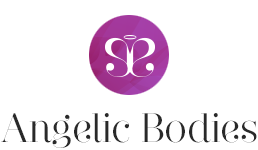 How do you react when you feel angry, sad or frustrated? Do you wallow in sadness or allow anger to consume you or snap at loved ones with frustration? If you find that you have become a slave to your emotions then read on.
How do you react when you feel angry, sad or frustrated? Do you wallow in sadness or allow anger to consume you or snap at loved ones with frustration? If you find that you have become a slave to your emotions then read on.
Whatever unwanted or negative emotion comes up, just accept it. Don’t try to run from it or change it, just recognise and accept it without getting caught up in the emotion. When we try to change the emotion we create feelings of doubt or negativity towards the emotion and towards ourselves, exacerbating our emotional unease. Accepting allows us to embrace every aspect of ourselves without judgement or fear. Once the emotion is recognised and let be, usually it will drift away of its own accord, like clouds floating by in an otherwise clear blue sky.
Sometimes emotions come in waves and we need to go through a process of recognising, accepting and allowing the emotion to drift away a number of times before it fully passes. This can happen in quick succession every few minutes or it can be over a period of hours or days. Either way, we must remain present and recognise what is happening rather than becoming caught up in the ensuing emotion.
When we start to engage with negative emotions, we become embroiled in self pity, anger, fear or an emotional dialogue that we buy into, be it true or false. Even if our emotional story in our heads is mainly true, it is most probably tainted with small but significant untruths that we have created to lean the story in our favour, for example “if she hadn’t behaved angrily, then I wouldn’t have reacted with anger” or something similar. In any case, we are not dealing with facts, just supposed events that occurred in the past or future imagined events that we are relying on our memory or imagination to recreate. The best solution is not to get caught up in the mind chatter, not to engage with it but to observe it as we notice it happening without buying into it, just observing and releasing. It takes a lot of will power not to emotionally engage, especially if this a habitual pattern that has been repeated unconsciously for years, but with practice and patience it becomes easier to be the onlooker and not the storyteller. It’s a bit like going for a walk and noticing a couple arguing on a bench. You sit down nearby and can hear what is being said but you don’t take sides or feel emotionally involved in the conversation. You simply observe and listen without any judgement. When ready, you move on, leaving the couple and their story behind and continue with your day.
Meditation a is very beneficial practice to begin exercising our minds and start to notice the constant chatter that takes place in our heads each moment. As we become aware of this dialogue we can start to disengage from it and eventually train our minds to be more still. Meditation is like a workout for the mind as, not only does it help us to become a aware of the constant chatter in our heads, it helps us to allow the incessant dialogue to quieten down and to let peace replace it. A peace that always exists inside of us but gets hidden by layers of thoughts, worries and fears. When we strip away these layers, it leaves room for us to be still, peaceful and content which is our natural state. Unfortunately, so many of us have become so good at hiding this inner peace with stress and “everyday” worries that we now believe this state of unease to be the norm! We have forgotten our true nature.
In addition to meditation, affirmations are another great way to stay focused and present. Repeating a positive affirmation instead of getting caught up in thoughts is beneficial and helps us to realign with a harmonious state. Try some of the following:
“I lovingly accept every aspect of myself”
“I understand and accept that every emotion serves a purpose”
“I recognise and accept my emotions, allowing them to pass through me with ease”
“I allow emotions to flow through me with acceptance and ease”
Using one or more of the above affirmations or something similar that resonates with you, will help in the process of flowing with your emotions rather than getting bogged down by them.
The main points to remember are the three key steps:
- Recognising – negative self talk or emotions
- Accepting – all emotions are a part of our being
- Allowing or Letting go – emotions will drift away if we don’t engage with them.
The process must be repeated each day as often as you notice negativity creeping in. With practice it will become a new habit and the process will be a lot easier.






